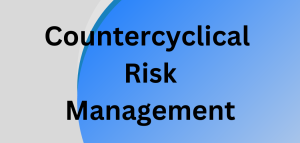By Pascal vander Straeten September 01, 2023
Since the GFC of 2007-2008, there have been a lot of articles written heralding the need for organizations to build more resilient business models. Resiliency is the best antidote for an organization when facing turbulent times.
In the realm of financial markets, power rests with those who control the money. Consequently, stability requires trust in the financial system and in governments whereby ethics and culture are key factors. Still, while the requirement for cultural reform may be self-explanatory, the challenge in bringing about and strengthening change should not be underestimated, especially in nations where free-market forces have tended toward the creation of plutonomies.
Financial markets are also characterized by their complexity given that the activities on these markets are a function of the number of interactions in the financial system as well as how veiled and confusing they are to understand. This article considers the concept of high-reliability organization (HRO), identifying its cultural aspect, and suggests that this could offer a way forward to build more resilient business models, particularly for systemically important financial organizations.
In the past couple of decades researchers (i.e., C. Perrow, P.N Rasmussen, K.H. Roberts, and K.E. Weick) have found that agencies that operate according to certain principles, henceforth referred to as High-Reliability Organizations (HROs), both prevent accidents and perform distinctly better during system accidents than other organizations.
In other words, one tool to achieve this goal of resiliency is the use of the concept of “High-Reliability Organization (HRO).” HROs are anomalies, and they exist in the very complex, fast-evolving environments where you would expect chaos to prevail, while there is no chaos to be found. HROs cope successfully with unexpected conditions, and that’s what makes these unique organizations so attractive to scholars.
Knowledge about HROs is rooted in what is called “heroic” organizations, such as aircraft carriers, ER in hospitals, air traffic control systems, NASA, nuclear reactors, wildfires, the military, railroad freight, or prison logistics where a thousand things must go right every moment, or someone dies. I would like to stretch this HRO concept and apply it to less heroic settings like banking, for example.
In essence, HROs are illustrations of mindful organizing, which entails sense-making, continuous coordination, and adaptive managing. There is a persistent drive toward improvement through a culture of organizational learning as these organizations require nearly error-free operations at all times. Any significant deviation from planned courses of action is likely to evolve into a publicly visible human-made disaster that could lead to the destruction of the organization and a broader public.
Also, they treat near misses with the same sense of urgency as a failure, being ever mindful that the circumstances that led to a near miss could reemerge as a disaster. HROs seek continually to search for improvement via systematic gleaning of feedback and the conduct of program and operational review. This principle forms a basis for a continuous drive to improve that governs the way these organizations operate, and in particular, how they view failure. By continually monitoring performance, HROs promote an environment among their personnel of never being satisfied with the status quo. They exhibit a quite unusual willingness to reward the discovery and reporting of error, without at the same time pre-emptor ally assigning blame. HROs monitor performance to compile a thorough record of performance and experience data.
As already mentioned, High-Reliability Organizations are mindful organizations, distinguished by high levels of resilience and responsiveness (i.e., they are stable organizations with a low risk of failure, capable of continuing to operate efficiently in times of trouble). High-Reliability Organizations are characterized by customer-centric objectives and exemplary leadership, with a capacity to continuously and consistently provide products and services to high predefined standards.
It is therefore that banks, in a context of ever more recurring black swans, would be well-advised to modify their corporate culture in such a way that it embraces these principles of HRO. A big part of the reliability culture is the focus on a prime directive, which is apparently communicated and reinforced to each member of the organization. Failure at any level is considered to be a comprehensive failure to which everyone on board is viewed as a contributor; remedial action is swift, significant, thorough, and visible. Operating under such conditions drives the persistence of HROs to learn from failure, improve, and become more competent.
One can easily understand how tools such as supply chain risk management (i.e., identifying the weakest link on the chain of operations and test how it needs to recover when facing adverse circumstances) and reverse stress testing (always looking at events from a perspective of failure thereby fostering a culture that on an ongoing basis monitors incidents and near-misses). And, these two methods supply chain risk management and reverse stress testing) are entirely in line with the four fundamental principles that underpin HROs: ongoing preoccupation with failure, reluctance to oversimplify, sensitivity to operations, and commitment to resiliency.







